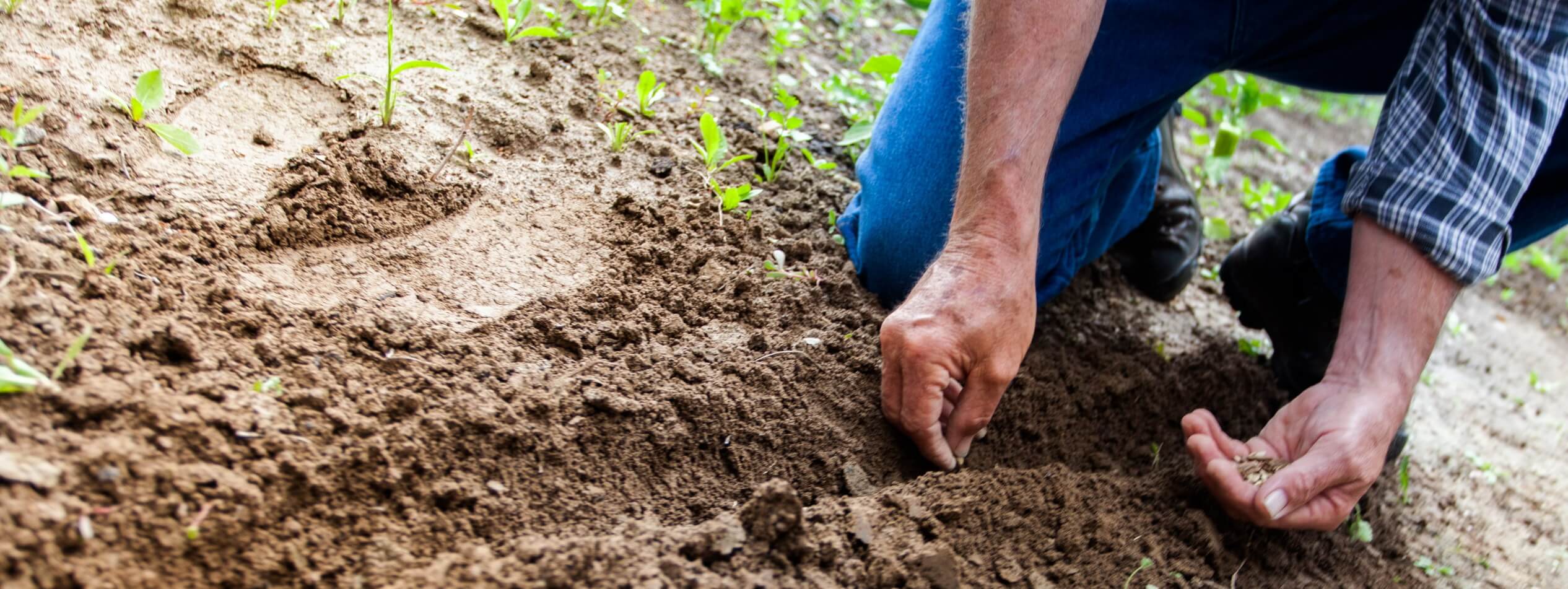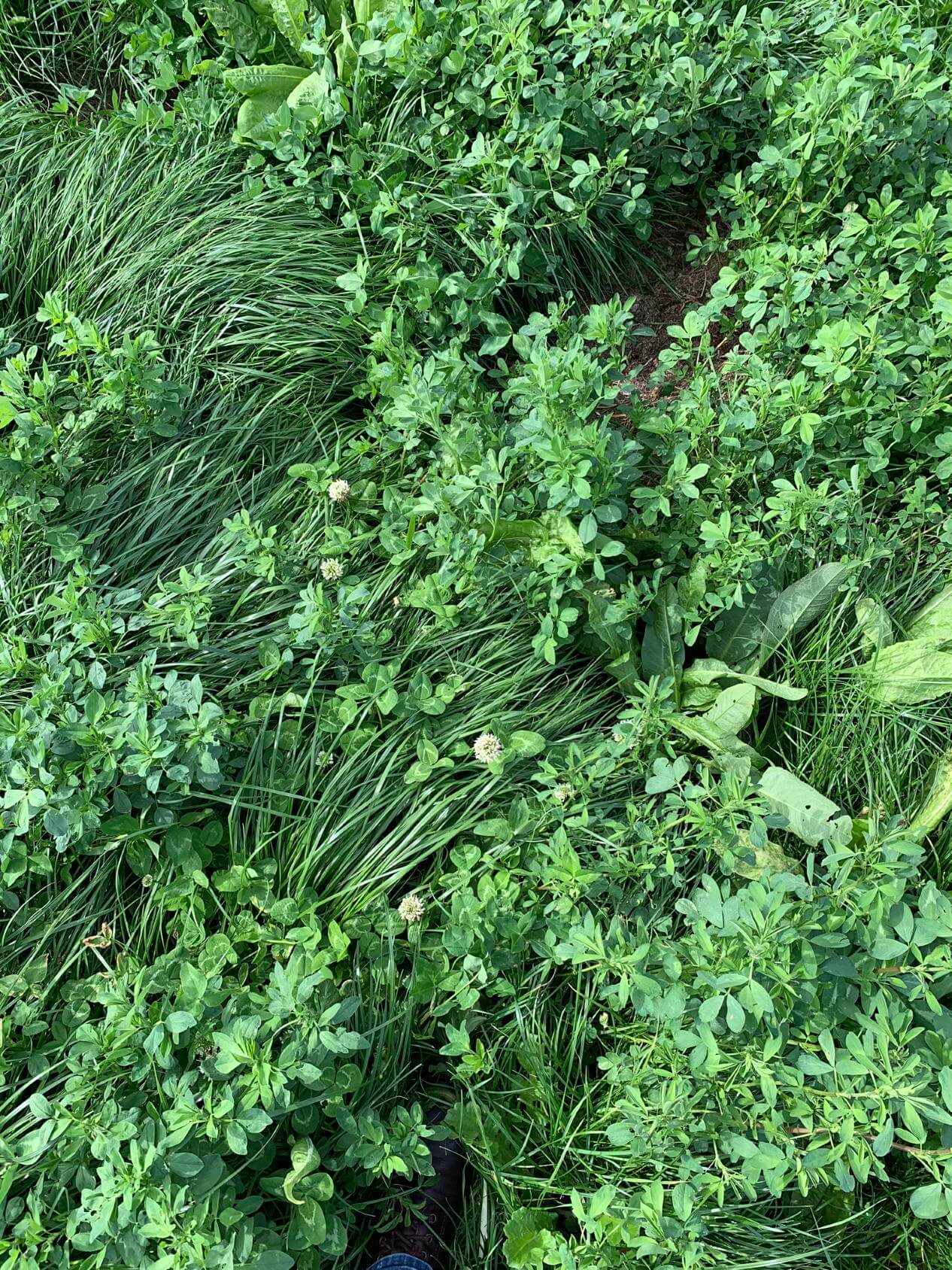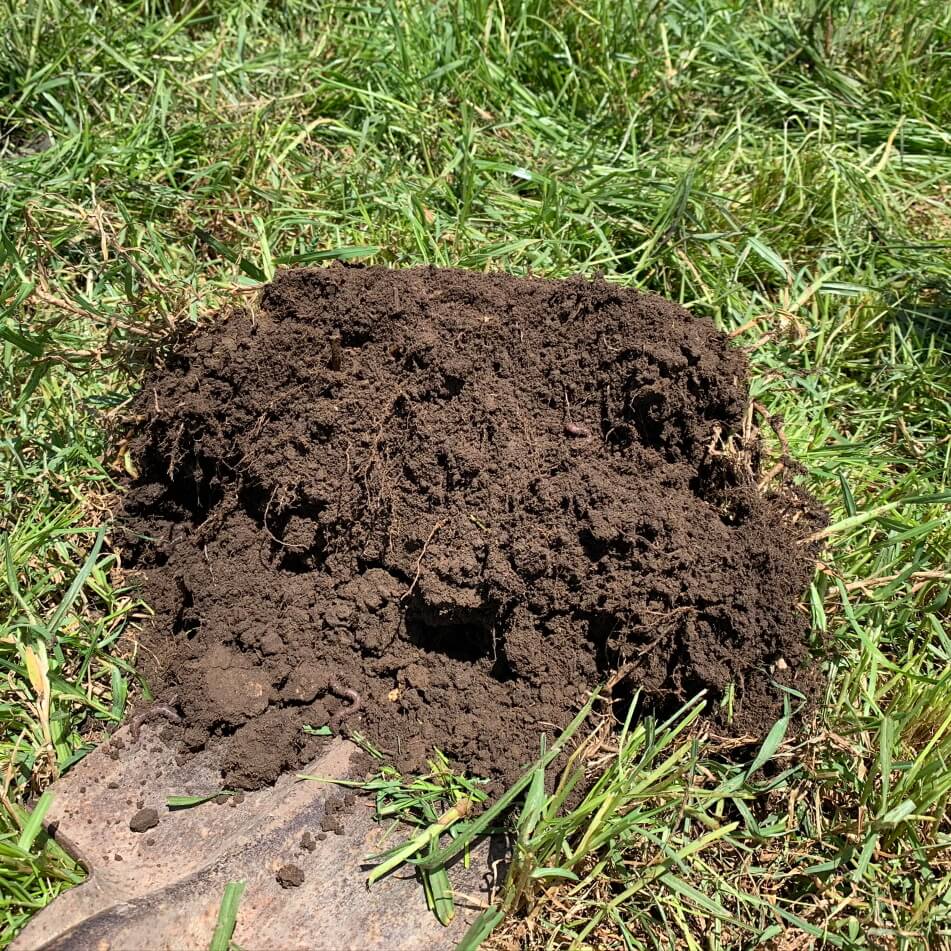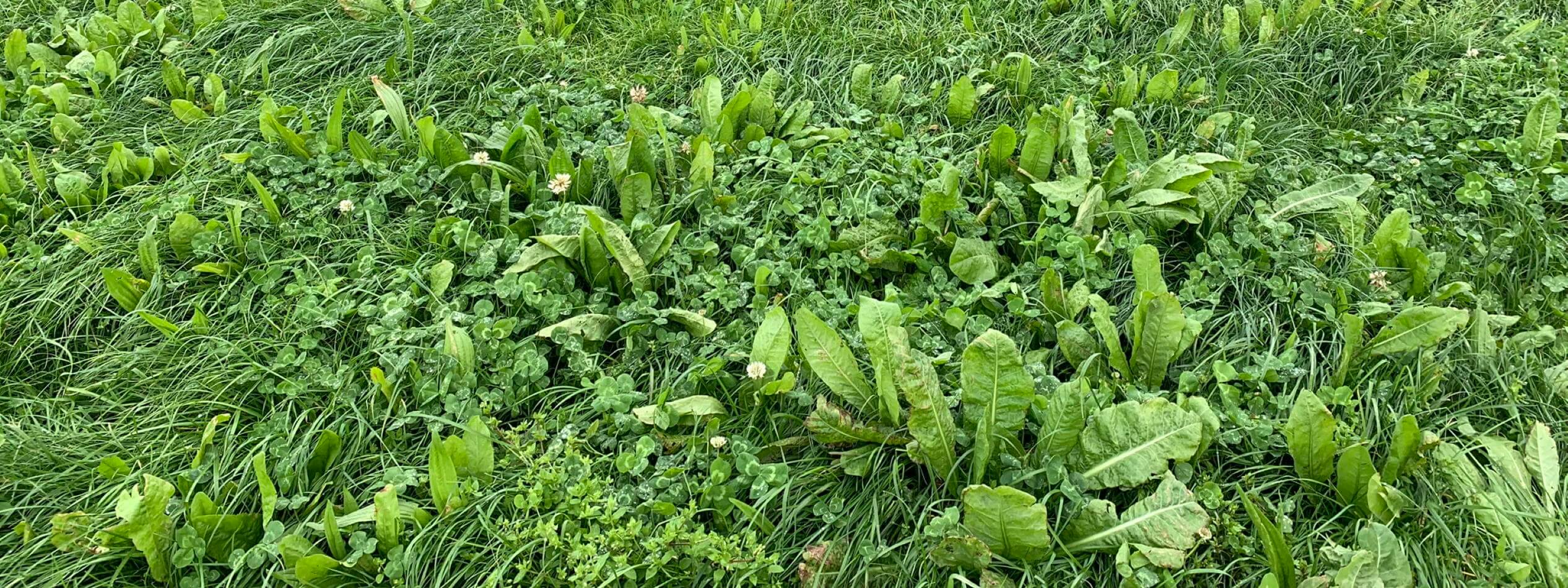I read an interesting article by Christine Jones recently. She emphasises five core principles for soil restoration. I would encourage everyone to read the full article, but I am going to summarise the five principles below in my own words. I believe they are very important keys for farmers that are interested in regenerating their soils.
Dr Christine Jones’ five principles:
- Green is good — and year-round green is even better
- Microbes matter
- Diversity is indispensable
- Chemical use can be dangerous
- Avoid aggressive tillage
1. Green is good – and year-round green is even better
Photosynthesis is key to restoring soil. It transfers carbon from the atmosphere to the soil, and carbon is the most important nutrient for maintaining/improving soil health. Carbon feeds soil life, stores nutrients and water and helps form good structure.
Green is important as the more green there is, the more photosynthesis can take place. This is both from the perspective of volume and duration. The more biomass bulk there is above ground, the more carbon there is being transferred to the soil through photosynthesis. The more living plants there are through the duration of the year, the more photosynthesis will take place.
There are two easy ways to ensure as much green as possible. On farms which have grazing animals, perennial, multi-species pastures are perfect. The key in getting these pastures to contribute both to quality animal feed and soil restoration is to graze them optimally. On cropping farms, the way to get carbon into the soil is through multi-species cover crops. These are crops grown with the express purpose of pumping carbon, through their leaves, through their roots, into the soil.
2. Microbes matter
It is tough to fully comprehend the diverse, thriving ecosystem that occurs in healthy soil. But it is imperative that we try. The more we realise what this ecosystem can do for providing nutrients, water and protection to plants, the more we will value it.
A lot of conventional agricultural practices replace and/or inhibit the functions that these ecosystems play. The more these practices, for example, the over-application of chemical fertilisers and pesticides, are implemented, the more the soil relies on them and the less it relies on natural processes. To restore functional soil ecosystems, these practices must be limited and practices that enhance a balanced soil food web should be implemented instead.
We do not fully understand all the complexities in the relationships between micro-organisms and roots in the soil. Although there is a lot of information out there, it is exciting to think that there is so much more to learn. One thing we do know, microbes matter when it comes to restoring soil to a healthy state.
3. Diversity is indispensable
The beauty of diversity is that it is nature’s way. Each different plant species releases different exudates through their roots. These exudates feed a diversity of micro-organisms in the soil. The more plant species there are, the more diverse the soil food web. As already discussed, this diverse ecosystem can support productive crops and pastures.
Diversity is also resilient. When there are multiple species in a system, different ones will thrive under different conditions. Something that threatens one species does not necessarily threaten them all. This is important for the point discussed above, where the more green there is over the duration of the year, the better.
Diverse systems are more difficult to manage – this is the challenge for farmers. I think this is one of the biggest influences on farmers not wanting to diversify their systems. With diverse pastures and crops, you cannot just manage everything in a singular manner. Different aspects need to be prioritised differently. This does not necessarily cost more money (as is sometimes mentioned as a barrier), but it does require more mental energy and active management. Farmers need to ask themselves if they are willing to put in this effort.
4. Chemical use can be dangerous
Christine Jones does a great job of explaining this in the article. It is often referenced that chemicals harm the soil, but it is not often well-explained. People therefore challenge the idea and say chemicals are not really that bad, which has resulted in a lot of farmers not really knowing where they stand.
As more chemicals are applied, soil and plants rely on this pathway. The roots and organisms in the soil become lazy. Their functions are not really needed, so they dwindle. Thus, more chemicals are used, soil becomes increasingly unhealthier, and more chemicals are required to grow healthy plants.
This dynamic explained above is not the only threat. Overuse of nitrogen and phosphorous fertilisers causes pollution of water resources and the atmosphere. Poor water quality and climate change are both threats to healthy soil.
5. Avoid aggressive tillage
We all now seem to agree that tillage has a negative impact on soil health. It destroys soil structure and depletes soil carbon. And good soil structure is one of the most undervalued aspects of healthy soils. Therefore good structure is imperative to restoring soils.
Regenerating our soils
The evidence is continually mounting for why regenerative agriculture is so important for the future of food production. Farmers are provided with a framework to evaluate their current practices and adapt their farms’ systems using the five principles discussed. The goal is to restore agricultural soils to a healthy state – every farm is different, but the soil restoration principles always apply.
Sources
http://ecofarmingdaily.com/soil-restoration-5-core-principles/ – Accessed 2 December 2019
- A carbon footprint assessment for pasture-based dairy farming systems in South Africa - 2024-02-07
- What progress have farms participating with Trace & Save made over the past 10 years? - 2023-09-06
- Carbon footprint reduction over time: Lessons from pasture-based dairy farms in South Africa - 2023-09-04




